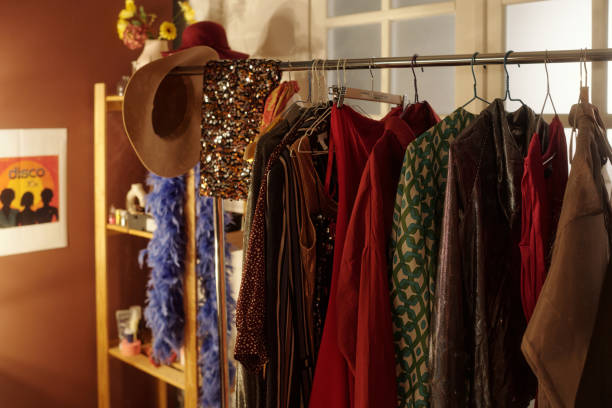Vintage Dresses: Timeless Style for Modern Wardrobes
Vintage dresses never go out of style. Whether you love ‘50s glamour or ‘90s minimalism, vintage fashion offers one-of-a-kind pieces with charm and character. Discover where to find authentic dresses, how to style them, and why they’re making a major comeback.

What Makes a Vintage Dress Authentic?
A true vintage dress is typically defined as clothing that’s at least 20 to 30 years old, though many fashion enthusiasts reserve the term for pieces dating back to the 1920s through 1980s. Authentic vintage dresses showcase the construction techniques, fabrics, and design sensibilities of their respective eras. Key indicators of authenticity include period-appropriate zippers, buttons, and closures, as well as construction methods like French seams and hand-finished details that were standard in earlier decades.
The quality of vintage dresses often surpasses modern garments due to superior craftsmanship and higher-quality fabrics. Many vintage pieces were made to last, featuring sturdy construction, quality linings, and attention to detail that’s rarely found in today’s fast fashion. Labels, when present, can help identify the era and maker, though many beautiful vintage dresses were custom-made by skilled seamstresses and may lack designer labels entirely.
Types of Vintage Dresses Through the Decades
Different decades produced distinctly different styles of vintage dresses, each reflecting the social, cultural, and economic climate of their time. The 1920s brought us the iconic flapper dress with dropped waistlines and shorter hemlines that revolutionized women’s fashion. The 1930s introduced bias-cut evening gowns that draped beautifully over the body’s natural curves.
The 1940s wartime era created practical yet elegant day dresses with A-line silhouettes and modest necklines, while the post-war 1950s exploded with full-skirted dresses that celebrated femininity and abundance. The 1960s brought mini dresses and shift styles that reflected the decade’s youth culture and changing social norms. The 1970s offered bohemian maxi dresses and wrap styles, while the 1980s featured power shoulders and structured silhouettes that embodied the era’s bold attitude.
How to Style Vintage Dresses for Modern Life
Successfully incorporating a vintage dress into contemporary wardrobes requires balancing authentic period details with modern sensibilities. The key is mixing vintage pieces with current accessories and shoes to create looks that feel fresh rather than costume-like. A 1950s swing dress pairs beautifully with modern ankle boots and a leather jacket, while a 1970s wrap dress can be styled with contemporary jewelry and a structured blazer for office wear.
Consider the occasion when styling vintage pieces. A simple 1960s shift dress works perfectly for casual daytime activities when paired with sneakers and a denim jacket. For evening events, a 1940s cocktail dress with modern heels and minimal jewelry creates sophisticated elegance. The goal is to let the vintage dress be the statement piece while ensuring the overall look feels current and appropriate for your lifestyle.
Where to Find Quality Vintage Dresses
Finding authentic vintage dresses requires patience and knowing where to look. Estate sales and vintage clothing stores often yield the best finds, as they typically curate their selections and can provide information about the pieces’ origins. Online marketplaces have expanded options considerably, though buyers should carefully examine photos and ask detailed questions about condition, measurements, and authenticity.
Thrift stores and consignment shops occasionally house vintage treasures, though finding quality pieces requires regular visits and a trained eye. Vintage clothing shows and specialized dealers offer higher-end options with authenticated pieces, though prices reflect the expertise and curation involved. Building relationships with vintage sellers can lead to first access to new acquisitions that match your style preferences and size requirements.
Vintage Dress Shopping: Price Ranges and Where to Buy
Understanding the vintage dress market helps set realistic expectations for both quality and pricing. The cost varies significantly based on designer, era, condition, and rarity.
| Category | Price Range | Where to Find | Key Considerations |
|---|---|---|---|
| Basic Vintage Dresses | $30-80 | Thrift stores, estate sales | May need alterations, condition varies |
| Quality Vintage Pieces | $80-250 | Vintage boutiques, Etsy sellers | Better condition, authenticated pieces |
| Designer/Rare Vintage | $250-1000+ | Specialized dealers, auction houses | Museum-quality pieces, investment items |
| Reproduction Vintage | $50-200 | Modern retailers, online shops | New construction with vintage styling |
Prices, rates, or cost estimates mentioned in this article are based on the latest available information but may change over time. Independent research is advised before making financial decisions.
Caring for Your Vintage Dress Collection
Proper care ensures vintage dresses remain beautiful and wearable for years to come. Always check care labels when present, though many vintage pieces require special handling regardless of manufacturer recommendations. Professional cleaning is often the safest option, particularly for delicate fabrics like silk, velvet, or beaded pieces that could be damaged by home washing.
Storage plays a crucial role in preservation. Vintage dresses should be hung on padded hangers or stored flat in acid-free tissue paper to prevent stretching and fabric degradation. Avoid plastic bags, which can trap moisture and promote mildew. Cedar blocks help deter insects naturally, while climate-controlled storage prevents the temperature and humidity fluctuations that damage vintage textiles over time.
The enduring appeal of vintage dresses lies in their ability to offer something truly unique in an era of mass production. Each piece carries the craftsmanship, design philosophy, and cultural significance of its time while remaining relevant and beautiful in contemporary settings. Whether you’re building a collection or adding your first vintage piece, these timeless garments offer an opportunity to express individual style while connecting with fashion history in a meaningful way.




